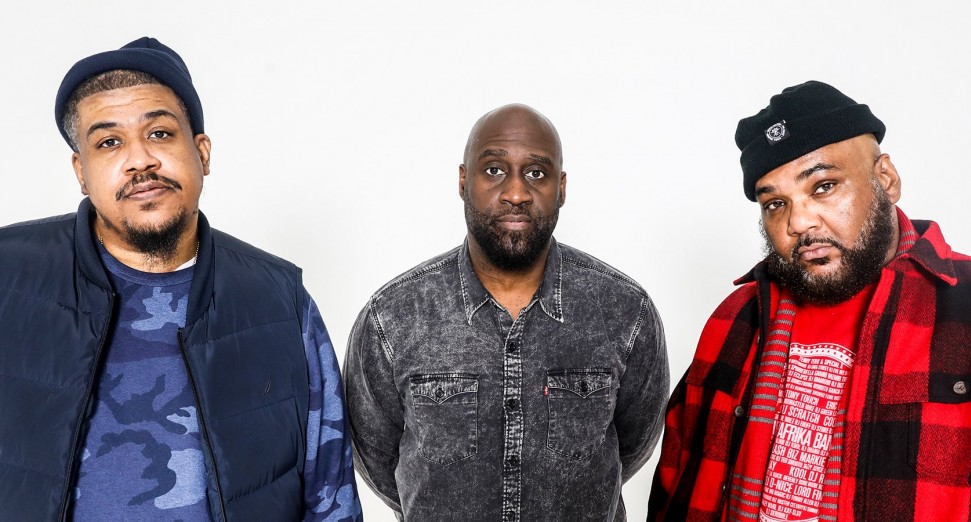
How Rabbitology Found Clarity in Chaos on “Joanie”
Img Cred: Andrew Memmer
Dorm room synths.
Raspy vocal stacks.
A lyric sheet that reads like a manifesto.
Rabbitology’s new single “Joanie” doesn’t just channel Joan of Arc—it rewires her story as a lens for navigating gender, identity, and spiritual dissonance in 2025. It’s a stark evolution from their release back in January, Living Ghost EP, pushing the folktronica project into more pointed, expressive territory without losing any of the detail-driven production that makes Nat Timmerman’s music feel lived in and hand-stitched.
The track feels heavier than its soft surface lets on. Beneath the intimate tone and bedroom-made textures lies a quiet howl—a protest against the weaponization of religion, the myth of divine clarity, and the pressure to conform. It’s no accident that Rabbitology is playing major support slots this fall alongside The Oh Hellos. With tracks like this, they’re not just making music—they’re building context for lives lived in between.
We caught up with Rabbitology to talk about chaos as texture, perfection as a distraction, and the secret to keeping 500-track sessions on rails.
What’s one tiny detail you always prioritize in your workflow?
Making sure that I’m okay first.
And I don’t mean just emotionally—sometimes an emotional pull is great for workflow. Especially because my music isn’t happy-go-lucky, sometimes I’ll purposely get myself in a sour mood for the song to be more potent. I mean basic level: getting good food, rest, a water cup, before I settle in for a full night of production.
If I’m not physically okay, with any hiccup in workflow, excuses to leave become prevalent.
For me, this can turn into a waterfall of more excuses not to get to work. So I tend to the basic needs first, so I can focus on the work and the work only.
Have you ever seen a small fix unlock a huge creative shift?
How quickly a song “comes to me” is almost completely dependent on if its percussive and bass elements “work.” Bass and drums are the drivers of my work, surprisingly, and sometimes a quick adjustment to them like syncopation or a different pattern can completely unlock a song that I’ve been stuck on for months.
How do you build momentum from the micro level?
Embracing imperfection. Stop blaming interruptions and start implementing them into the project.
I used to get so frustrated because my dorm was right outside the men’s communal restroom, which meant constant door slamming. When you’re trying to record 200 vocal layers in a night, that means catching a slam almost every third take. You can either get angry and shut the computer and give up on the song, or you can embrace the fact that now, a piece of your environment is trapped within the song forever like a little time capsule.
What do you pay attention to that others might ignore?
Synthesis. Almost every instrument in my works has a reason to be there, and not just for sonic fullness. If a lyric mentions an object that I can get my hands on and reasonably make sound out of, then that object becomes an instrument.
What helps you stay detail-oriented without getting bogged down?
Organization within the chaos.
My songs usually comprise over 500 individual tracks on a day that I’m feeling hectic. It’s all about grouping similar sounds in folders together, and then making folders for similar folders. If it sounds confusing, that’s because it is.
When has handling something small saved a project from falling apart
“Preybirds” almost never was released because I got so frustrated with my vocal takes not being what I wanted.
So instead of recording the lead vocals, I told myself I was only recording the unimportant background hums and harmonies. That led to the genesis of the “ha, ha!” part, and the chilling melodies near the bridge.
What’s your process for refining the little things consistently?
Delegation.
I delegate nights to focusing on different elements of the project. Tonight’s for the foley, tonight’s for the midi instruments, etc. The power in delegation comes from, instead of looking at the large, daunting project as a whole, it’s broken into smaller pieces that work different parts of the sonic brain.



